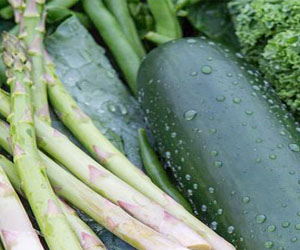


The Timeless Pleasure Of Comfort Food
In every household, there are recipes that hold a special place in the hearts of family members. These are the dishes that transcend the realm of food and become cherished traditions, providing not only sustenance but also comfort and a sense of togetherness. Family favorites are culinary treasures, lovingly passed down through generations, and they hold a unique power to bring families closer and create lasting memories.
At the core of family favorites lies the concept of comfort and familiarity. These are the dishes that have been prepared and enjoyed for as long as anyone can remember. They are the meals that evoke memories of childhood, of special occasions, and of the comforting presence of loved ones. Whether it's a hearty pot roast, a creamy macaroni and cheese, or a decadent chocolate cake, family favorites have the ability to transport us to a place of comfort and contentment.
 One of the most endearing aspects of family favorites is their versatility. These dishes come in all shapes and sizes, representing a wide array of culinary traditions and cultural backgrounds. From the soul-warming stews of the American South to the rich and complex flavors of Italian lasagna, and from the spicy delights of Indian curry to the homely goodness of Japanese comfort food, family favorites showcase the diversity of the world's cuisines and the unique way each family makes these dishes their own.
One of the most endearing aspects of family favorites is their versatility. These dishes come in all shapes and sizes, representing a wide array of culinary traditions and cultural backgrounds. From the soul-warming stews of the American South to the rich and complex flavors of Italian lasagna, and from the spicy delights of Indian curry to the homely goodness of Japanese comfort food, family favorites showcase the diversity of the world's cuisines and the unique way each family makes these dishes their own.
Family favorites are not just about taste; they are about tradition, heritage, and connection. The act of preparing and sharing these beloved recipes creates a sense of togetherness and unity. Cooking and enjoying these dishes with loved ones fosters a bond that transcends generations, ensuring that the flavors and traditions of the past remain alive and vibrant in the present.
In a fast-paced world, where daily life often seems to rush by, family favorites serve as a reminder of the importance of taking a moment to appreciate the simple pleasures in life. These dishes encourage us to slow down, gather around the table, and share a meal with loved ones. They offer an opportunity to create lasting memories and pass on the culinary traditions that have shaped our families.
Family favorites are not just about the recipes themselves; they are about the stories, the love, and the sense of belonging that accompany them. These dishes are the embodiment of the old saying, "Food is love made visible." They are a testament to the enduring power of comfort food, tradition, and the pleasure of sharing a meal with the people who matter most.
Whether it's the Sunday roast, the secret recipe for holiday cookies, or the special dish reserved for birthdays, family favorites are the culinary treasures that make a house feel like a home. They are the dishes that bring warmth to our hearts and joy to our taste buds, and they remind us that, in the end, food is not just about nourishing our bodies; it's about nourishing our souls and the bonds we share with our loved ones.
A Comprehensive Approach To Health And Well-Being
 Physical wellness is often the aspect of holistic health that people are most familiar with. It encompasses regular exercise, a balanced diet, and adequate sleep. Physical wellness aims to keep the body in optimal condition, making it less susceptible to illnesses and promoting longevity.
Physical wellness is often the aspect of holistic health that people are most familiar with. It encompasses regular exercise, a balanced diet, and adequate sleep. Physical wellness aims to keep the body in optimal condition, making it less susceptible to illnesses and promoting longevity.
Exercise is not just about maintaining an ideal weight; it also has profound effects on mental health. Regular physical activity can reduce stress, improve mood, and boost self-esteem. A holistic approach to physical wellness also includes practices like yoga and meditation, which promote flexibility, balance, and inner calm.
Mental And Emotional Well-Being
Mental and emotional wellness are essential components of holistic well-being.


Unprocessed Foods And Their Vital Role In Health
 Rich In Nutrients: Unprocessed foods are loaded with vital nutrients. Fresh fruits and vegetables, for instance, provide an array of vitamins, minerals, fiber, and antioxidants that are essential for overall health. These nutrients are not only abundant but also easily absorbed by the body.
Rich In Nutrients: Unprocessed foods are loaded with vital nutrients. Fresh fruits and vegetables, for instance, provide an array of vitamins, minerals, fiber, and antioxidants that are essential for overall health. These nutrients are not only abundant but also easily absorbed by the body.
Low In Harmful Additives: One of the major drawbacks of processed foods is the presence of artificial additives, including trans fats, high-fructose corn syrup, and excessive sodium. Unprocessed foods are devoid of these harmful additives, reducing the risk of health issues such as obesity, cardiovascular diseases, and high blood pressure.
Balanced Macronutrients: Whole foods contain a natural balance of macronutrients - carbohydrates, proteins, and fats - without an excessive amount of any one component.
 Fresh Ingredients As Key Players
Fresh Ingredients As Key Players
Flavorful plant-based cuisine places a strong emphasis on the use of fresh, seasonal ingredients. Fruits and vegetables in their prime, legumes, whole grains, nuts, and seeds form the foundation of these dishes. The freshness and quality of these ingredients not only enhance the taste but also provide a wealth of nutrients, vitamins, and minerals.
Spices And Herbs For Complexity
Spices and herbs are the secret weapons in crafting flavorful plant-based dishes. Ingredients like garlic, ginger, turmeric, cumin, coriander, and a variety of aromatic herbs are used to create layers of complexity in flavors. These natural seasonings not only add depth but also contribute to the health benefits of the dishes.
Umami-Rich Ingredients
Umami, the fifth basic taste, often associated with savory and meaty flavors, is a hallmark of many plant-based recipes. Ingredients like mushrooms, soy sauce, miso, and nutritional yeast are used to add richness and depth to dishes, giving them a satisfying and meaty taste without actual meat.
Texture And Presentation
Texture plays a significant role in the appeal of flavorful plant-based dishes. Ingredients like tofu, tempeh, seitan, and various plant-based meat substitutes offer the chewiness and mouthfeel traditionally associated with animal products. Expertly prepared, these ingredients can mimic the texture of meat in a way that adds to the overall dining experience.
A Recipe For Health And Sustainability
 Health Benefits: Organic cooking prioritizes the quality and nutritional value of ingredients. Here are some key health benefits associated with organic cooking:
Health Benefits: Organic cooking prioritizes the quality and nutritional value of ingredients. Here are some key health benefits associated with organic cooking:
Nutrient-Rich Ingredients: Organically grown foods tend to be richer in essential nutrients, such as vitamins, minerals, and antioxidants. This means that meals prepared with organic ingredients can provide a more substantial nutritional punch.
Avoiding Harmful Chemicals: Organic cooking eliminates the risk of ingesting synthetic pesticides and herbicides commonly found on conventionally grown produce. These chemicals have been linked to various health issues, making organic options a healthier choice.
Reduced Exposure To Antibiotics And Hormones: Organic meats and dairy products come from animals that are raised without antibiotics and synthetic hormones. By consuming organic animal products, you reduce your exposure to these potentially harmful substances.
Better For Allergies: Organic foods have been reported to be less likely to trigger allergies due to their lack of synthetic chemicals and genetically modified ingredients.
Sustainability And The Environment: Organic cooking is not only beneficial for your health but also for the planet. Sustainable farming practices that go hand-in-hand with organic cooking have several environmental advantages:
A Tapestry Of History, Diversity, And Tradition
 Cuisine And Culinary Traditions: Mediterranean cuisine is renowned worldwide for its health benefits and delicious flavors. It reflects the region's emphasis on fresh, seasonal ingredients, such as olive oil, fruits, vegetables, legumes, and grains. Dishes vary from country to country, but common ingredients and culinary techniques, such as grilling, roasting, and the use of aromatic herbs, unite the Mediterranean palate. Meals are often shared with loved ones, emphasizing the social aspect of dining.
Cuisine And Culinary Traditions: Mediterranean cuisine is renowned worldwide for its health benefits and delicious flavors. It reflects the region's emphasis on fresh, seasonal ingredients, such as olive oil, fruits, vegetables, legumes, and grains. Dishes vary from country to country, but common ingredients and culinary techniques, such as grilling, roasting, and the use of aromatic herbs, unite the Mediterranean palate. Meals are often shared with loved ones, emphasizing the social aspect of dining.
Art And Architecture: Mediterranean culture has produced some of the most stunning and enduring works of art and architecture. Greek and Roman architecture have left indelible marks on the region, and medieval influences can be seen in the cathedrals and fortresses of coastal towns.